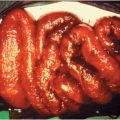Figure 45.1 The pathogenesis of acute cholecystitis is illustrated on the left side of the figure, whereas differences in clinical presentation between acute cholecystitis and complicated acute cholecystitis are shown on the right. Note that bacteria do not play a primary role, but result in progression of the disease to its complicated form. WBC = white blood cell.
Diagnosis
Acute cholecystitis must be distinguished from biliary colic and clues need to be sought to determine if complicated cholecystitis is imminent or already present. Both patients with acute cholecystitis and biliary colic experience right upper quadrant abdominal pain, but pain with acute cholecystitis is persistent, lasting more than 3 to 4 hours, and associated with abdominal tenderness. Tenderness is well localized in the right upper quadrant of the abdomen, directly over the gallbladder, and increases when the patient inspires as the gallbladder strikes the examiner’s hand (Murphy’s sign). The maneuver can be duplicated with the ultrasound probe (ultrasonic Murphy’s sign). Diffuse right upper quadrant tenderness is suggestive of a liver problem, and severe tenderness or peritonitis is indicative of complicated cholecystitis or another upper abdominal cause of pain.
Systemic signs of inflammation such as low-grade fever and moderately elevated white blood cell (WBC) count are usually present. The presence of dark urine, acholic stool, or jaundice raises the question of common bile duct stones; malignant ductal obstruction is more often characterized by painless jaundice. Back pain and epigastric tenderness also heightens one’s suspicion of choledocholithiasis or biliary pancreatitis.
Examination can, however, be misleading. Some patients exhibit few signs and symptoms of acute cholecystitis, delaying the diagnosis and severity of the disease. Such patients are more likely to be elderly, male, and have a history of cardiac disease and WBC greater than 15 000. It is important to have a heightened index of suspicion in patients who fit this profile and to promptly treat their disease (Figure 45.1).
Laboratory testing should include complete blood count with differential, liver function tests, serum amylase, and serum lipase. The latter three tests may suggest choledocholithiasis or biliary pancreatitis when abnormal. While WBC is usually moderately elevated, counts greater than 15 000 suggest severe disease (gangrene or perforation of the gallbladder). Ultrasound of the abdomen reliably demonstrates gallstones in the majority of patients. A typical clinical presentation coupled with a “positive” ultrasound for stones suffices for the diagnosis. More specific findings of acute cholecystitis such as gallbladder wall thickening and pericholecystic fluid are less frequent and suggest more severe disease. HIDA scan may be helpful in patients without gallstones or with atypical presentation. Nonvisualization of the gallbladder on HIDA scan is specific for acute cholecystitis as this technique visualizes the gallbladder in only about 2% of patients with acute cholecystitis; demonstration of the gallbladder argues strongly against acute cholecystitis.
Bacteriology
Interestingly, bacteria are not isolated from bile in the great majority of patients undergoing operation early in the course of the disease. Bacteria in the bile increase as the duration from the onset of symptoms increases; the majority of patients demonstrate bacterobilia by 3 days. The relative proportion of organisms varies in studies, but in general the most common organisms isolated include the gram-negative bacteria Escherichia coli, Klebsiella, Proteus, and Pseudomonas and gram positives, especially Enterococcus (Table 45.1). The presence of multiple species of bacteria is also common. Anaerobic bacteria are reportedly isolated in less than 10% of cases but may be more common, because culturing these organisms using standard techniques is difficult. Candida species are uncommon in normal patients but frequent in immunosuppressed patients and patients with malignancy.
| Gram negative | Gram positive | Anaerobes | Fungi |
|---|---|---|---|
| Escherichia coli | Enterococcus | Bacteroides species | Candida species |
| Klebsiella species | Streptococcus species | Clostridium species | |
| Proteus species | |||
| Pseudomonas species | |||
| Enterobacter species |
Notes: Approximately 65% of patients are colonized with a single species of bacteria; 35% are polymicrobial.
Gram-negative bacteria are cultured from nearly 75% of patients.
Treatment
All patients should be evaluated and prepared for operation, which may be required at any time if the disease progresses. They should be given intravenous fluid resuscitation, placed on bowel rest, and begun on antibiotics. Antibiotics must cover the spectrum of bacteria outlined above, but complicated cholecystitis and immunosuppressed patients require even broader coverage (Table 45.2).
| Acute cholecystitis |
|---|
| Cefoxitin 1–2 g IV q6–8h |
| Ampicillin–sulbactam (Unasyn) 3 g IV q6h |
| Acute cholangitis |
|---|
| Single agents Ciprofloxacin 400–800 mg IV q12h or Piperacillin–tazobactam (Zosyn) 3.375 g IV q6h or Imipenem 500 mg IV q6h |
| Multidrug therapy Ampicillin 2 g IV q6h + gentamicin 5–7 mg/kg IV q24h or Cefazadime 1–2 g IV q8–12h + ampicillin 2 g IV q6h + metronidazole 500 mg IV q6h |
Stay updated, free articles. Join our Telegram channel

Full access? Get Clinical Tree





